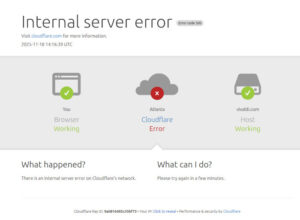 Now we know he walked and wasn’t pushed.
Now we know he walked and wasn’t pushed.
Back on August 27 when Red Hat announced that CTO Brian Stevens had left the building and was no longer in their employ, rumors began flying as people began to wonder what happened. His resignation came without warning and Red Hat wasn’t forthcoming with anything, other than a terse message wishing him well, so it’s only natural that some people began to suspect that some kind of shakeup was in play. Indeed, I was pretty sure that he hadn’t left voluntarily but had been pushed through the door.
I was wrong. Stevens left to take a job at Google, where he’s now vice-president of cloud platforms. According to Steven J. Vaughan-Nichols, he’s is evidently the right person for the job.
“At Google, Stevens will use his abilities to bring Google’s Compute Engine (GCE) to the forefront of the enterprise cloud. While GCE’s not based on OpenStack, it’s otherwise a natural next step for Stevens.”
I don’t know how much Google’s paying him, but it has to be more than plenty. As the Triangle Business Journal reported on August 28 when he walked out the door for the last time at Red Hat’s Raleigh headquarters, he left behind a boatload of cash.
“In October of 2013, he was promoted to both executive vice president, CTO and “executive officer” status, a move that increased his yearly salary base from $413,058 to $480,000 per year. It also included a non-compete clause, as well as a long-term cash award with “a total potential value of $6 million. The bonus would be paid in four installments, with $1.5 million coming directly with the promotion in October. He was set to receive another $1.5 million this October but, according to an agreement, the resignation axes that payout.
“Additionally, his resignation also impacts the 93,875 restricted stock awards he received with the promotion, as they include a four-year vesting period.”
Red Hat, of course, is probably not thrilled to see him taking his OpenStack knowledge with him to Mountain View, but they’ll survive.
Christine Hall has been a journalist since 1971. In 2001, she began writing a weekly consumer computer column and started covering Linux and FOSS in 2002 after making the switch to GNU/Linux. Follow her on Twitter: @BrideOfLinux





